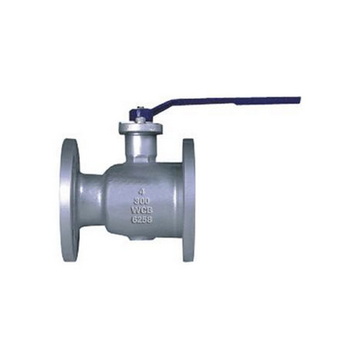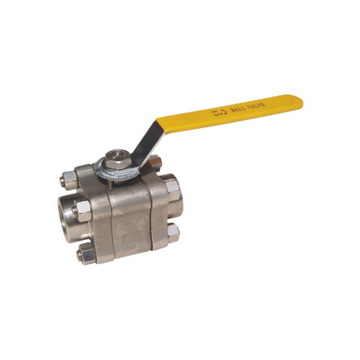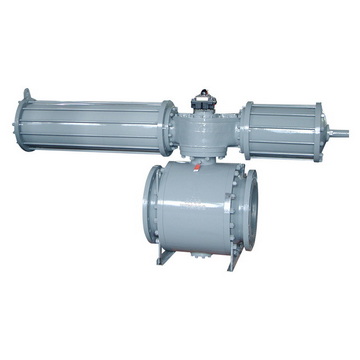What Certifications Matter When Buying Manual Ball Valves?
Content Menu
● Overview of manual ball valves and certifications
● Key certifications by region and standard
>> ISO 9001 and quality management systems
>> SIL and functional safety certifications
>> NSF and consumer/regulatory certifications
>> Regional and market-specific certifications
● How certifications impact OEM sourcing
● Documentation and verification tips
● Industry applications and case considerations
● Manufacturing and design considerations for OEM partners
● Verification strategies for buyers
● Industry best practices and practical tips
● FAQ
>> 1. What does ASME certification cover for manual ball valves?
>> 2. How does API/ISO certification differ for ball valves?
>> 3. What is the significance of SIL/functional safety certifications?
>> 4. Which certifications are most valued in oil & gas vs desalination?
>> 5. How to verify a valve certification during procurement?
Introduction
In critical industrial systems, the choice of a manual ball valve is not merely about material compatibility or pressure ratings. Certifications provide the verifiable assurance that the valve meets internationally recognized safety, reliability, and performance standards. For OEMs, distributors, and brand-licensees, understanding which certifications matter—and how to verify them—can reduce project risk, shorten procurement timelines, and improve long-term operational integrity in demanding environments such as upstream and downstream oil and gas, seawater desalination, and offshore drilling platforms. This article traverses the landscape of certifications relevant to manual ball valves, explains their practical implications for sourcing and supply chain management, and offers actionable guidance for OEM collaboration and supplier qualification. It also describes how to structure documentation, select appropriate certifications for specific applications, and assess the value of certification programs in global markets.

Overview of manual ball valves and certifications
A manual ball valve provides reliable shutoff and throttling control in a compact, robust package. The core elements include the body, ball, seats, stem, and handle; these components must withstand the operating temperature, pressure, and corrosive media typical of demanding industries. Certifications serve as independent attestations that the design, manufacturing processes, materials, and testing meet predefined criteria. They help buyers compare valves from different vendors on a level playing field and ensure that the product can be safely integrated into complex systems across regions with varying regulatory expectations. For an OEM sourcing strategy, certifications also facilitate supply continuity by aligning with partner quality systems, documentation standards, and traceability requirements.
Key certifications by region and standard
Global valve standards are established by multiple organizations, each addressing different aspects of design, performance, and safety. The most widely recognized frameworks relevant to manual ball valves include ASME, API, ISO, PED/CE, SIL, and NSF. While specific certifications vary by market, the underlying goals are consistent: demonstrate conformity to defined technical requirements, ensure traceability of materials and manufacturing, and provide documented evidence of product performance through testing and quality management practices.
ASME based certifications
- ASME Boiler and Pressure Vessel Code BPVC provides design, materials, fabrication, and inspection criteria for valves intended for high-pressure service. Valves manufactured to ASME BPVC require quality assurance programs, proper welding procedures, and documented hydrostatic or other validated tests. For buyers, ASME certification signals adherence to rigorous design and manufacturing controls that support reliable operation in demanding service conditions, such as offshore platforms and high-temperature process lines, making them highly valued for manual ball valves used in critical installations.
API and ISO certifications
- API standards address performance and interchangeability in oil and gas contexts. API 608 and API 6D are among the commonly referenced references for resilient valve design and testing, while ISO equivalents provide international harmonization around performance criteria, surface finish, dimensional tolerances, and pressure ratings. Certification to API or ISO schemes typically involves third-party verification of the product, the manufacturing process, and the quality management system. For global procurement, API/ISO certifications help ensure compatibility across vendor fleets and reduce the risk of nonconforming components entering multi-vendor pipelines.
ISO 9001 and quality management systems
- ISO 9001 is a global baseline for quality management systems. While not a valve-specific certification, ISO 9001 demonstrates a manufacturer's commitment to process consistency, data-driven improvement, and supplier controls. Buyers frequently require ISO 9001 to ensure that ongoing production maintains defined quality levels, traceability, and corrective action capabilities, which are essential in OEM relationships and long-term supply contracts.
- PED and CE marking
- The Pressure Equipment Directive (PED) governs the design, manufacture, and conformity assessment of pressure equipment within the European Union. Compliance typically involves a conformity assessment procedure, documentation, and in many cases the involvement of a Notified Body. CE marking communicates conformity with EU safety, health, and environmental requirements. For manual ball valves destined for the EU market, PED/CE compliance is often a prerequisite, particularly for systems handling high-pressure media or hazardous substances.
SIL and functional safety certifications
- SIL (Safety Integrity Level) certifications and related functional safety assessments apply when valves are integral to safety-related systems, such as emergency shutdown or critical process control loops. While many manual ball valves are not safety-rated devices by themselves, assemblies incorporating valves in safety systems may require SIL-related verification, documentation of failure modes, and proven reliability under defined mission profiles. For projects in process industries, including offshore and desalination, understanding SIL implications helps in risk assessment and design decisions.
NSF and consumer/regulatory certifications
- NSF certification is particularly relevant where valves contact potable water or food-grade environments. NSF 61 pertains to health effects of materials in contact with drinking water, while NSF 372 concerns lead content. For projects involving water treatment or potable water systems, NSF certifications can be important to meet environmental and health regulations and to support market acceptance in regions demanding potable water compliance.
Regional and market-specific certifications
- In addition to the broad categories above, some markets require specific regional certifications or documentation. For example, certain jurisdictions emphasize local conformity assessments, material traceability, or specific testing cycles. When engaging with international OEM partners, it is prudent to map target markets to their mandated certifications and to plan for certification maintenance, renewal, and surveillance audits as part of the supply chain management strategy.
How certifications impact OEM sourcing
For original equipment manufacturers (OEMs) and international brand partners, certification programs influence multiple facets of the sourcing process. First, certifications affect supplier qualification and selection. A vendor with comprehensive certification coverage demonstrates an established quality management system, robust manufacturing controls, and a transparent documentation package, which accelerates onboarding and reduces supplier audit cycles. Second, certifications influence the total cost of ownership. Although achieving and maintaining certifications may add upfront and ongoing costs, the long-term benefits include lower warranty claims, reduced field failures, and easier global logistics given standardized documentation. Third, certifications shape the documentation framework required for project execution. Buyers often request a validation dossier including material certificates, test reports, manufacturing process controls, and traceability data. For OEMs, aligning product development and production with certification requirements from the outset supports faster time-to-market and smoother approvals in multinational supply chains.
Documentation and verification tips
Effective procurement and validation rely on a clear documentation package. At a minimum, buyers should expect: material test reports and chemical analysis certificates, mechanical test results (such as hydrostatic and seat leakage tests where applicable), design calculations or conformity declarations, and a certificate of compliance with the relevant standard. A well-organized Quality Management System documentation set—often including ISO 9001 certificates, internal inspection records, and manufacturing data books—facilitates independent verification by customers, auditors, and third-party inspectors. For OEM collaborations, it is prudent to establish a standardized pre-qualification dossier that can be adapted to different regions or client requirements. This dossier should also include clear definitions of material specifications, surface finishes, sealing elastomers, and any coatings used, with corresponding compliance statements and test evidence. Additionally, traceability is critical: lot data, batch numbers, and supplier lot reconciliation should be readily accessible to support post-sale service, warranty management, and regulatory inquiries.

Industry applications and case considerations
Oil and gas, seawater desalination, and offshore drilling platforms present unique challenges that elevate the importance of robust certifications. In upstream and midstream oil and gas applications, valves may face sour gas environments, high-pressure service, and extreme temperatures. Certification to anti-corrosive material standards, proper seat materials, and validated testing regimes helps mitigate leak paths and ensure long-term integrity in critical lines. For seawater desalination, materials must resist high chloride corrosion and biofouling tendencies, making certifications related to material compatibility and corrosion resistance valuable. In offshore platforms, the combination of remote operation, explosive atmospheres, and limited maintenance windows means suppliers must provide reliable documentation, spare parts availability, and service support that aligns with certification expectations. Across these applications, the presence of certifications often correlates with a higher degree of confidence in your supply chain, enabling OEM partners to deliver integrated solutions with predictable performance.
Manufacturing and design considerations for OEM partners
From a design perspective, knowing the certification landscape guides material selection, surface treatment, and sealing technology. For example, certain elastomers or resultant seating materials are selected to comply with water contact or chemical exposure standards, while steel alloys are chosen to withstand specified pressure and temperature regimes. Manufacturing processes must be controlled under a documented quality system to meet the criteria of relevant standards. The use of traceability systems, controlled welding procedures, and validated non-destructive examination (NDE) practices strengthens certification readiness. For OEM collaborations, aligning product development milestones with certification review cycles helps ensure that prototypes, pre-production samples, and pilot runs carry the necessary documentation to support qualification testing and field deployment. Efficient coordination between design engineers, manufacturing teams, and certification bodies reduces the risk of nonconformances and accelerates project delivery.
Verification strategies for buyers
Buyers should implement a structured verification plan when evaluating manual ball valves. This includes pre-qualification of suppliers based on the breadth and depth of their certification portfolio, verification of the validity and scope of each certificate, and confirmation that the manufacturer's quality management system aligns with the project's requirements. Verification activities also involve reviewing technical data sheets, material certificates, and testing records to confirm consistency with the stated standard. On-site supplier audits or remote assessments can be used to validate manufacturing controls, equipment suitability, and process capability. Finally, incorporating acceptance testing at the component or system level ensures that the final installation meets performance expectations under real operating conditions, thereby validating the certification claims in practice.
Industry best practices and practical tips
- Prioritize certifications that directly address your media, pressure, and temperature conditions. For water handling, potable water certifications may be essential; for hydrocarbon service, API and ASME align more closely with industry expectations.
- For safety-critical applications, assess SIL and functional safety implications to determine whether additional documentation and reliability data are needed for the overall safety instrumented system.
- Use a standardized documentation package to streamline procurement across regions. A well-structured data package can reduce audit time, enable faster approvals, and facilitate ongoing compliance management.
- Maintain an updated vendor list with current certificate validity dates and renewal timelines. Timely renewals prevent supply delays and ensure continued regulatory compliance.
- Collaborate with manufacturers who can provide a comprehensive manufacturing data book, which consolidates certificate information, test results, and process controls in a single, auditable source.
Conclusion
Certifications matter profoundly when selecting a manual ball valve for demanding industrial applications. They do more than confirm compliance; they provide a framework for reliable performance, safety, and lifecycle management across international markets. For OEMs and international buyers, a deliberate certification strategy enables better supplier qualification, streamlined procurement, and more predictable project outcomes in sectors such as oil and gas, seawater desalination, and offshore drilling. By partnering with a valve manufacturer that integrates rigorous certification management into design, fabrication, and post-sale support, clients gain a competitive edge through reduced risk, faster deployment, and enhanced service continuity. This approach also paves the way for scalable, long-term collaborations that can adapt to evolving industry standards and regional regulatory changes.
Call to action
If your next project seeks dependable, certifiably compliant manual ball valves, engage with a partner that can provide end-to-end OEM support, including certification advisory, material traceability, and comprehensive documentation packages tailored to your region and sector. Contact us to discuss your certification requirements, project timelines, and customization needs for floating ball valves, trunnion/ear-pin ball valves, and top-entry ball valves designed for oil and gas, seawater desalination, and offshore platforms.

FAQ
1. What does ASME certification cover for manual ball valves?
ASME certification typically covers the design, materials, fabrication, and testing requirements defined in standards such as the ASME BPVC. It ensures valves meet mechanical and performance criteria appropriate for high-pressure service and critical applications, providing confidence in structural integrity and operability under specified conditions.
2. How does API/ISO certification differ for ball valves?
API certifications focus on performance, interchangeability, and field reliability within the context of oil and gas operations, often with specific guidance for ball valves used in upstream or downstream processes. ISO certifications provide an international framework for quality management (ISO 9001) and product-specific standards that promote consistency across manufacturers and markets, facilitating global procurement and supply chain transparency.
3. What is the significance of SIL/functional safety certifications?
SIL certifications assess the safety integrity of systems that rely on valves as part of a safety instrumented system. While individual manual ball valves may not bear a SIL rating by themselves, the overall safety system's reliability depends on documented evidence of valve performance, failure modes, and maintenance strategies aligned with SIL requirements.
4. Which certifications are most valued in oil & gas vs desalination?
In oil and gas, API and ASME certifications, along with ISO 9001, are highly valued for their alignment with process safety and reliability in challenging environments. For desalination, certifications related to material compatibility, corrosion resistance, and potable water compatibility (where applicable) are particularly important, complemented by ISO 9001 and region-specific regulatory certifications.
5. How to verify a valve certification during procurement?
Verification involves validating the certificate scope, authenticity, and validity period with the issuing authority or notified body, cross-checking the vendor's quality management system documentation, and reviewing the associated test reports and material certificates. It is also prudent to perform pre-qualification checks and, where possible, on-site supplier audits to confirm ongoing compliance.
Hot tags: Manual Ball Valve Certifications, Certifications for Ball Valves, Important Valve Certifications, Quality Certifications for Manual Valves, Valve Certifications to Consider, Ball Valve Compliance Standards, Certified Manual Ball Valves, How to Choose Certified Valves, Ball Valve Certification Requirements, Certifications for Industrial Valves